Welcome to our blog on Goat Farm Operations Management! This series is perfect if you’re a goat farmer or considering starting a goat farming business. In this installment, we will explore the importance of month-wise maintenance for maximizing profits on your goat farm. Managing a goat farm requires careful planning and attention to detail, especially regarding maintenance tasks. By following a structured maintenance schedule tailored to each month’s specific needs, you can ensure the health and productivity of your goats, leading to better profits.
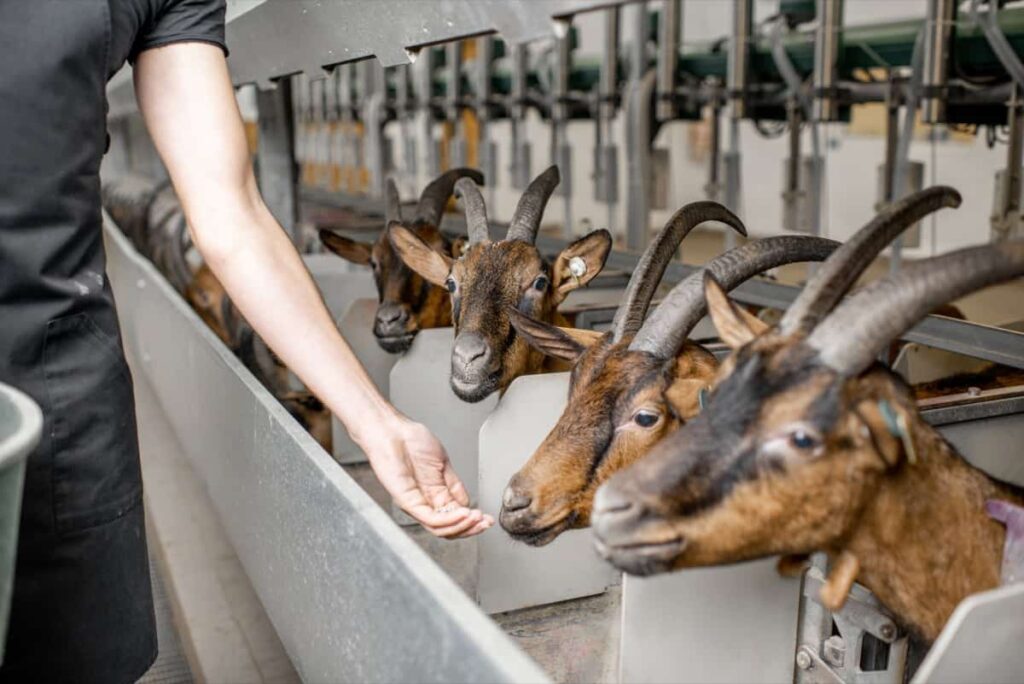
What is Goat Farm Operations Management?
Goat Farm Operations Management refers to the systematic planning, organization, and implementation of various tasks and activities involved in running a goat farm. It encompasses a range of responsibilities, including animal care, breeding, nutrition, health management, infrastructure maintenance, marketing, and financial management. Effective operations management ensures the efficient use of resources, maximizes productivity and profitability, and promotes the overall success of the goat farming business.
Goat Farm Operations Management for Better Profits
Goat farming is a promising agricultural venture with the potential for profitable returns. This involves implementing strategic practices and techniques to optimize various aspects of goat farming, including animal health, nutrition, breeding, infrastructure, marketing, and financial management. By adopting efficient management practices, goat farmers can enhance productivity, minimize costs, and ultimately increase profitability.
Animal Health Management Maintaining good animal health is vital for maximizing profits in goat farming. Regular veterinary check-ups, deworming, and vaccination programs are essential to prevent diseases and minimize health risks. Timely diagnosis and treatment of health issues, such as respiratory infections or parasitic infestations, ensure the well-being and productivity of the herd.
Nutrition and Feeding Management Providing a balanced and nutritious diet is crucial for goats’ optimal growth and development. A well-formulated feeding program should include a combination of quality forage, concentrates, and supplements. Proper nutrition promotes healthy weight gain and reproductive performance and improves milk production in dairy goats.
In case you missed it: Goat Nutrition and Feeding Schedule: Instructions for Beginners
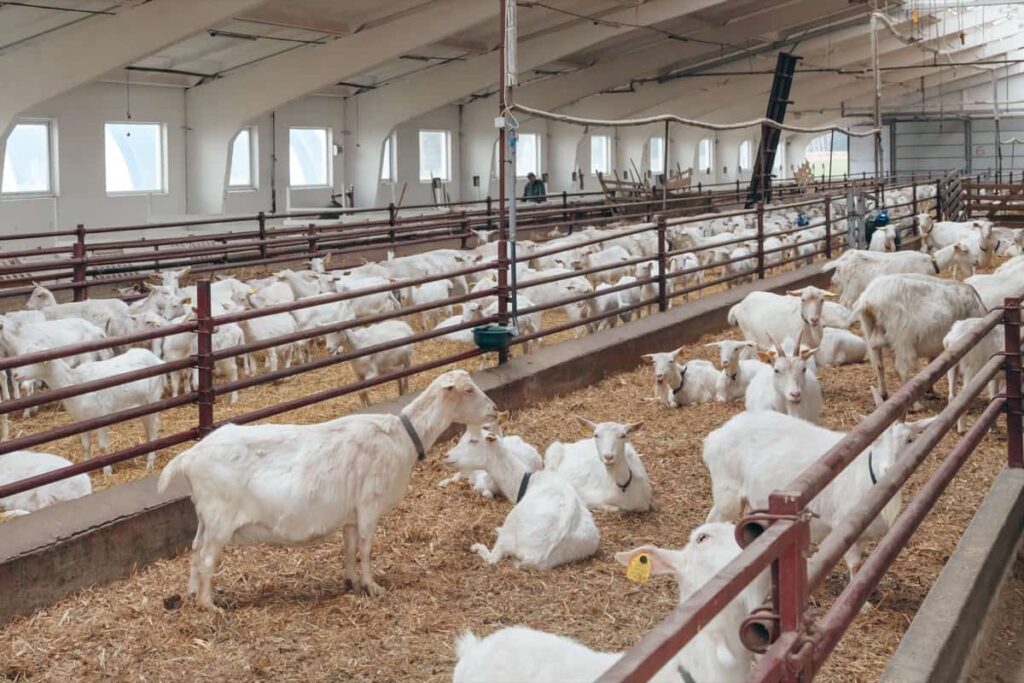
Breeding and Reproduction Management Efficient breeding and reproduction management practices are essential for maintaining a productive and profitable goat herd. This involves strategic breeding programs, including proper selection of breeding stock, careful monitoring of heat cycles, and controlled mating. Timely identification of pregnancies and adequate care during gestation and kidding contribute to successful reproduction and increased profitability.
Infrastructure and Housing Management Well-designed and properly maintained infrastructure and housing are essential for goat welfare and productivity. Adequate shelter, ventilation, and insulation protect goats from extreme weather conditions and minimize stress. Clean and spacious housing areas reduce the risk of disease transmission, while well-maintained fencing ensures proper containment and security.
Marketing and Sales Management Effective marketing and sales strategies play a crucial role in maximizing profits in goat farming. Understanding target markets, consumer preferences, and trends helps farmers effectively position their products. Building strong brand recognition, exploring diverse sales channels, and establishing partnerships with local businesses or markets can enhance product visibility and sales potential.
Financial Management Prudent financial management is vital for sustainable profitability in goat farming. Keeping detailed records of income and expenses, tracking financial performance, and analyzing profitability ratios help farmers make informed decisions. Budgeting, cost control measures, and resource allocation based on accurate financial data contribute to efficient financial management and long-term profitability.
Risk Management Managing risks effectively is essential for safeguarding profits in goat farming. This includes identifying and mitigating potential risks such as disease outbreaks, market fluctuations, or natural disasters. Implementing biosecurity measures, diversifying product offerings, and maintaining contingency plans help minimize losses and ensure business continuity.
In case you missed it: Goat Farming Project Report: Investment, Profit for 10, 20, 50, 100, and 500 Goats
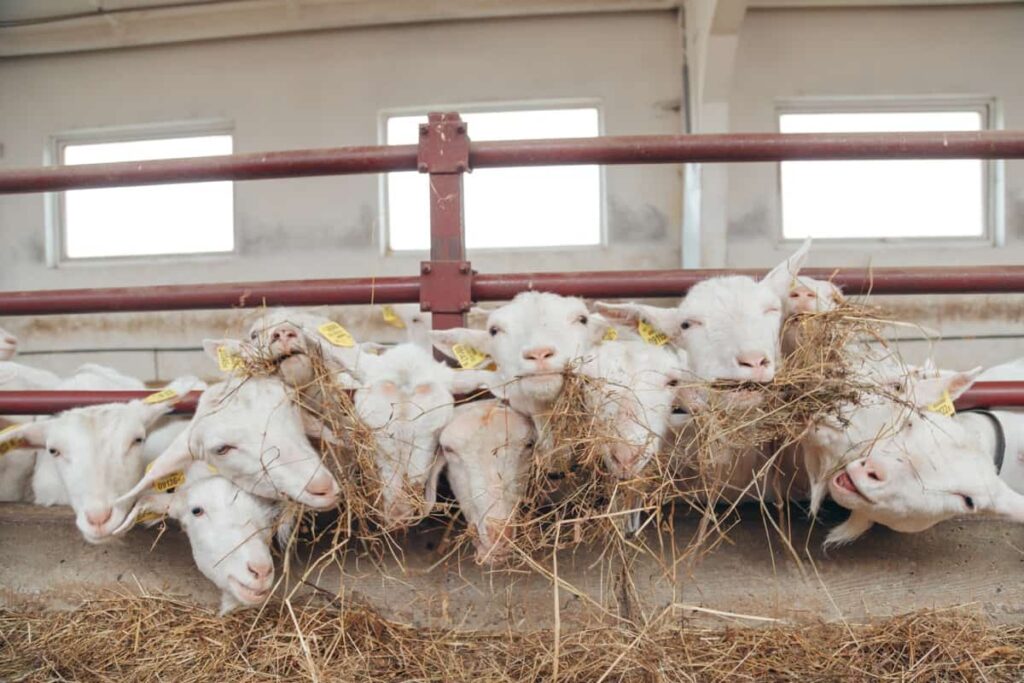
Continuous Learning and Adaptation Successful goat farming operations require continuous learning and adaptation to new industry trends and technological advancements. Staying updated on best practices, attending workshops or training programs, and networking with other farmers and experts in the field fosters knowledge growth. Flexibility and the ability to adapt strategies based on changing market dynamics contribute to long-term profitability.
January is the Month for Setting up the Foundation for Goat Farm Management
- Clean and well-maintained barns and shelters are crucial for goat farming success. Proper sanitation reduces the risk of disease transmission and ensures a healthy environment for goats. Regular cleaning and disinfection routines should be followed to maintain hygiene standards.
- Adequate ventilation and temperature control are essential for goat health. Proper airflow prevents respiratory issues while maintaining optimal temperature levels ensures comfort and reduces stress.
- Regular cleaning and disinfection routines prevent pneumonia, mastitis, and hoof infections. Effective disinfectants and proper cleaning techniques should be employed to minimize the risk of pathogen transmission.
February is the Month for the Breeding and Reproduction of Goats Farm
- Planning and preparing for the breeding season involves selecting appropriate breeding stock, evaluating their health, and ensuring optimal nutrition. A well-structured breeding plan increases the chances of successful mating and healthy offspring.
- Monitoring heat cycles is crucial for determining the ideal time for mating. Close observation of goats’ behavior and physical signs help in identifying when they are in heat. Proper mating techniques and the presence of a capable buck are essential for successful reproduction.
- Care for pregnant goats includes providing a balanced diet, monitoring their health, and preparing for kidding. Adequate nutrition and proper prenatal care contribute to kids’ healthy development and increase the likelihood of successful kidding.
March Month for Nutrition and Forage Management in Goat Farm
- Evaluating nutritional requirements for different stages of goats is crucial for their growth, reproduction, and overall health. Nutritional needs vary during gestation, lactation, and maintenance phases. A balanced diet that includes forage, concentrates, and supplements should be provided.
- Ensuring a balanced diet and supplementation is important to meet the specific nutritional needs of goats. This includes providing adequate protein, energy, vitamins, and minerals.
- Pasture management and optimizing forage resources are vital in goat farming profitability. Regularly monitoring pasture conditions, rotational grazing, and timely reseeding or fertilization contribute to high-quality forage availability, reducing feed costs and ensuring optimal nutrition.
In case you missed it: How to Make Silage for Livestock: Business Plan, Preparation Process for Goats, Sheep, Pigs, and Cows
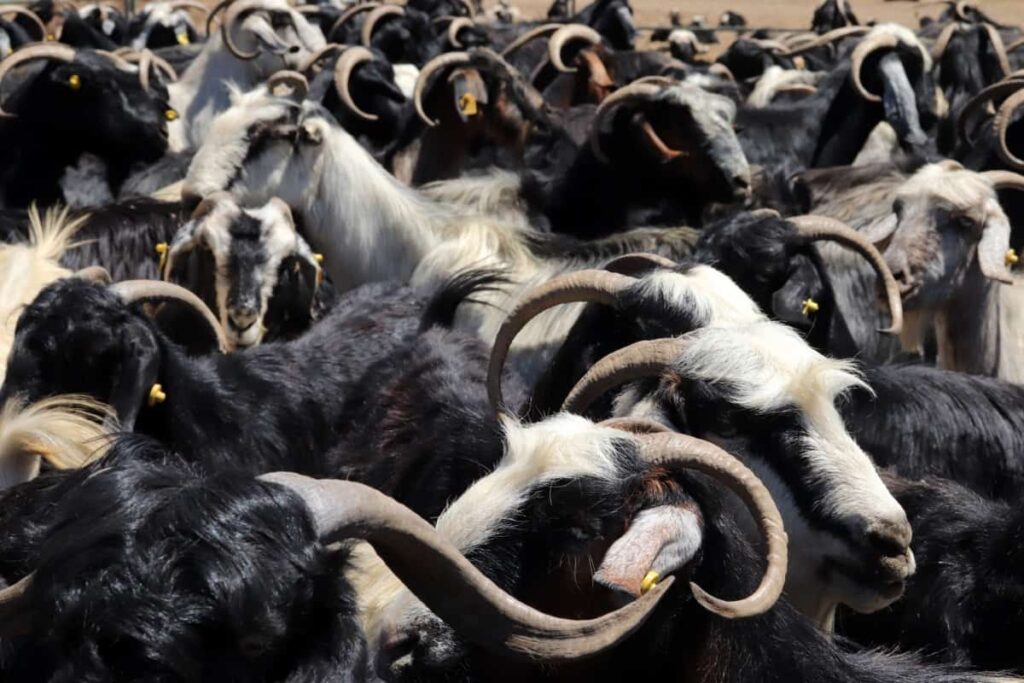
April is the Month for Health and Vaccination Management of Goat Farm
- Regular check-ups and deworming are essential to prevent and control common goat diseases. A veterinarian should conduct routine examinations, checking for signs of Disease and parasites and addressing any health concerns promptly.
- Vaccination schedules are crucial for protecting goats against diseases like clostridial infections, caseous lymphadenitis, and tetanus. Following recommended vaccination protocols helps in preventing outbreaks and improving overall herd health.
- Maintaining hygiene and sanitation practices in barns and shelters is vital to prevent the spread of diseases. Regular cleaning of bedding, disinfection of equipment, and proper waste management are effective preventive measures.
May Month for Milking and Dairy Operations of Goat Farm
- Proper milking techniques and equipment maintenance are essential for high-quality milk production. Ensuring a clean and sanitized milking environment, trained milkers, and regular equipment checks promote milk hygiene and prevent contamination.
- Milk storage and quality control measures are critical to maintaining the freshness and safety of milk. Proper cooling, storage temperatures, and timely collection or processing are crucial for preserving milk quality.
- Implementing effective marketing strategies for dairy products contributes to better profits. Identifying target markets, developing branding, and exploring distribution channels are key to reaching consumers and maximizing sales opportunities.
June Month Operations for Fencing and Grazing Management
- Evaluating fencing infrastructure and making necessary repairs to ensure the safety and containment of goats. Secure fences prevent escapes, protect goats from predators, and control grazing areas.
- Rotational grazing and pasture management optimize forage utilization and prevent overgrazing. Dividing pastures into smaller paddocks and allowing goats to graze in rotation promotes healthy forage growth and reduces the risk of parasites.
- Preventing predator attacks and securing the farm perimeter are crucial for goat safety. Installing appropriate fencing, using deterrents like guardian animals or noise devices, and monitoring for signs of predator presence help minimize losses.
July Month Operations related to Record-Keeping and Financial Management
- Accurate record-keeping is essential for effective goat farming operations. Detailed records of expenses, income, breeding, health, and other key aspects provide valuable insights for decision-making and analysis.
- Tracking expenses, income, and profit analysis allow farmers to evaluate the financial performance of their goat farm. Regular financial data monitoring helps identify improvement areas, cost-saving opportunities, and potential revenue streams.
- Making informed decisions for better financial management requires utilizing the data gathered through record-keeping. By analyzing the numbers, farmers can allocate resources efficiently, plan for investments, and set realistic goals for growth and profitability.
In case you missed it: How to Start Goat Farming in Bangladesh: Business Plan, Breeds, Cost, Profits, and Requirements
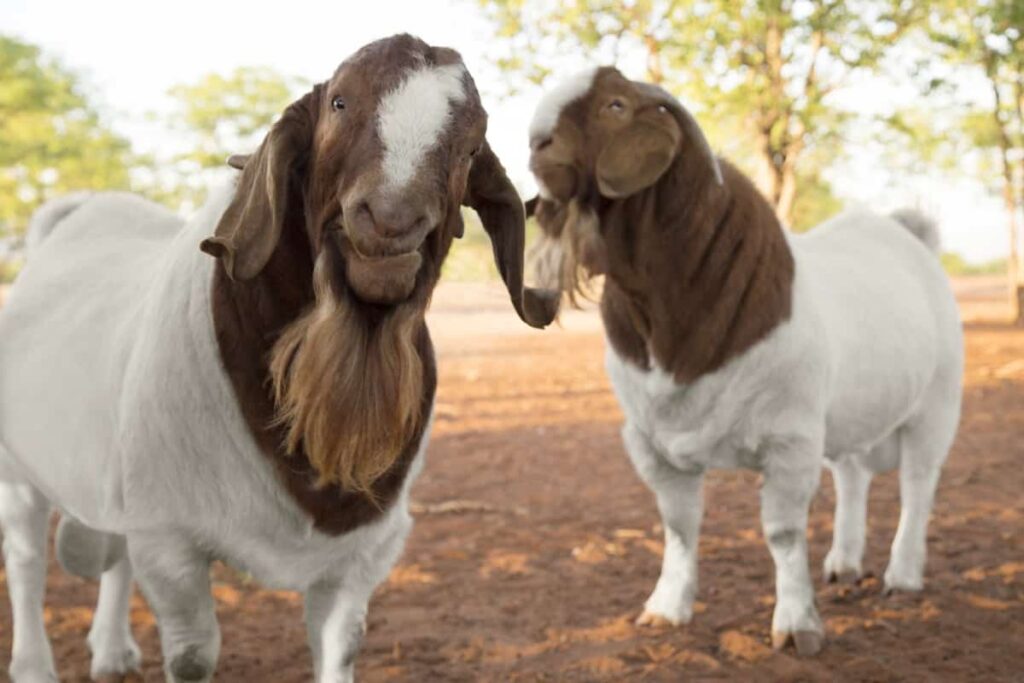
August Month Operations Herd Expansion and Genetics
- Assessing the potential for herd expansion involves evaluating available resources, market demand, and feasibility. Analyzing financial capabilities, infrastructure, and management capacity helps determine whether expanding the herd is viable.
- Selecting high-quality breeding stock is crucial for genetic improvement and the production of healthy offspring. Factors like breed characteristics, performance records, and genetic traits should be considered during selection.
- Implementing genetic improvement strategies, such as selective breeding or artificial insemination, can enhance desirable traits within the herd. Collaborating with breeders and utilizing advanced breeding technologies can improve productivity and profitability.
September Month Operations for Pasture Renovation and Weed Control
- Evaluating pasture conditions and identifying weed species helps determine the need for renovation. Assessing grass quality, weed prevalence, and soil fertility guides decisions on pasture improvement.
- Implementing pasture renovation techniques, such as reseeding or overseeding, helps rejuvenate grass growth and improve forage quality. Timely soil testing, proper seed selection, and adequate moisture management contribute to a successful renovation.
- Controlling weeds through proper management practices is essential to prevent competition for nutrients and optimize forage utilization. Strategies like mowing, herbicide application, or manual removal can help keep weed populations in check.
October Month Operations Shelter and Infrastructure Maintenance
- Inspecting and repairing barns, fences, and equipment ensures a safe and comfortable environment for goats. Regular maintenance and addressing structural issues promptly prevent accidents and promote animal well-being.
- Improving the overall goat comfort and safety infrastructure can include adding bedding, repairing water systems, or enhancing ventilation. Creating a well-designed and functional setup contributes to the overall efficiency of the farm.
- Winterizing the farm for cold weather conditions involves insulation, providing adequate bedding, and ensuring access to clean water. Preparing for extreme temperatures and weather events safeguards the health and welfare of the goats.
November Month for Marketing and Sales Strategies Operations
- Identifying target markets and consumer demands helps tailor marketing efforts to reach the right audience. Understanding consumer preferences, trends, and market competition provides insights for effective product positioning.
- Developing effective marketing strategies for goat products involves branding, packaging, and promotional activities. Utilizing various channels such as social media, farmers’ markets, or direct sales helps create visibility and generate customer interest.
- Establishing partnerships and exploring new sales channels, such as local restaurants or grocery stores, can expand market reach and increase sales opportunities. Collaboration with other local businesses or participation in industry events also enhances exposure.
December Month for Year-End Review and Planning Operations
- Analyzing the performance and profitability of the goat farm through key performance indicators (KPIs) provides a comprehensive overview. Assessing metrics like income, expenses, productivity, and herd health helps evaluate the year’s performance.
- Identifying areas for improvement based on the year-end review guides goal-setting and planning for the next year. Addressing weaknesses, exploring growth opportunities, and refining strategies contribute to continuous progress.
- Budgeting and resource allocation for future endeavors involve setting financial targets, forecasting expenses, and aligning investments with farm goals. Developing a detailed plan facilitates effective financial management and supports decision-making.
Note: Following month-wise maintenance tasks and implementing data-driven strategies, goat farmers can optimize their operations, enhance profitability, and achieve long-term success in their ventures(. Remember, consistency, attention to the goat, and adaptability are key to maximizing profits and ensuring the well-being of your goats.
In case you missed it: How to Make Silage for Livestock: Business Plan, Preparation Process for Goats, Sheep, Pigs, and Cows
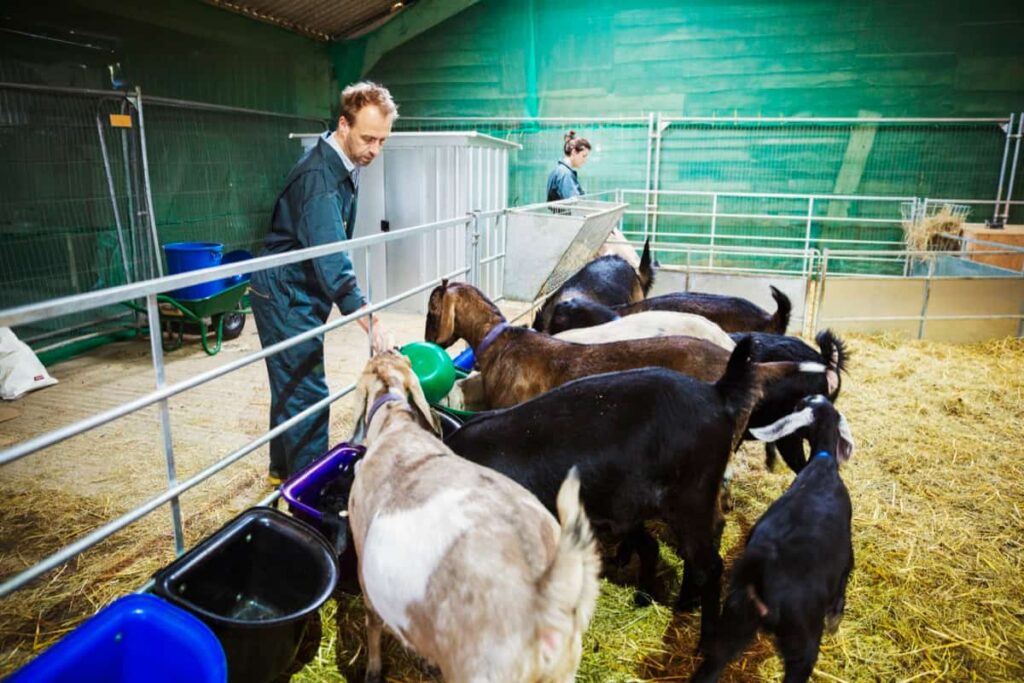
Quick Facts Related to Goat Farm Operations Management
- Month-wise maintenance allows farmers to address specific tasks and challenges at the right time, ensuring optimal productivity and profitability throughout the year.
- Clean and well-maintained barns and shelters provide a healthy and comfortable environment for goats, reducing the risk of diseases and promoting better growth and productivity.
- Adequate ventilation and temperature control in barns and shelters help regulate heat, humidity, and air quality, ensuring goats’ well-being and reducing stress, which can positively impact their productivity and overall health.
- Regular cleaning and disinfection help prevent the spread of diseases among goats, reducing the need for expensive treatments and medications and ultimately saving costs while promoting a healthy herd.
- Proper planning for the breeding season ensures effective mating, increasing the chances of successful pregnancies and the birth of healthy offspring, which can later contribute to milk or meat production and overall profitability.
- Providing a balanced diet and managing forage resources optimally ensures that goats receive the necessary nutrients for growth, reproduction, and milk production, resulting in improved productivity and profitability.
- Regular health check-ups and vaccinations help prevent diseases, reducing veterinary expenses and the risk of production losses due to illness/Disease. Healthy goats are more likely to reach their full production potential.
- Proper milking techniques, equipment maintenance, and quality control measures contribute to producing high-quality milk for commercial dairy operations. Selling premium dairy products can significantly increase profits.
- Well-maintained fences and proper grazing management minimize the risk of goats escaping and predation, allowing for efficient pasture utilization and reducing potential losses, ultimately enhancing profitability.
Conclusion
Adopting a month-wise maintenance approach in goat farm operations is key to maximizing profits. Farmers can optimize productivity, minimize costs, and ultimately enhance profitability in their goat farming ventures by addressing specific tasks and challenges at the right time.
- How to Raise Pigs in Your Own Backyard: A Comprehensive Guide
- Budget Friendly Sheep Shed Ideas: Cheap and Low-Cost Tips
- How Much Do Cattle Farmers Make: Revenue Streams in Cattle Farming
- Management Pests and Diseases in Your Cotton Field
- Sheep Farming Business Plan for Beginners
- Aquaponic Farming at Home: A Step-By-Step Guide
- Profitable Village Farming Business Ideas in 2024
- High-Yield Aquaculture: Fast-Growing Fish for Farming
- Effective Fish Pond Construction Techniques for Beginners
- Irrigation and Water Management in Pineapple Farming
- Blossom to Harvest: Mastering Flowering and Pollination in Papaya Farming
- Pig Fattening Essentials: From Selection to Sale for Beginners
- Raising Wagyu Cattle: A Complete Guide for Premium Beef Production
- Soil Types and Their Water Holding Capacity
- Optimizing Irrigation Schedules for Coconut Groves for Enhanced Yield
- Espresso Your Garden: Coffee Grounds for Healthier Acid-Loving Plants
- The Best Soil Mix for Snake Plants: How to Mix Your Own Snake Plant Soil
- Green Thumb Success: Expert Tips for Cultivating Greenhouse Beans All Year Round
- Bloom All Year Round: The Ultimate Guide to Indoor Hyacinth Care
- Eco-Friendly Gardening: How to Make Liquid Fertilizer from Kitchen Waste
- Ultimate Guide to Grow Anise in Pots: Explore Seed Propagation to Harvesting
- Guide to Raising Chester White Pigs: Discover Breed Facts to Growth Management
- Mastering the Elegance: The Ultimate Guide to Weeping Cherry Tree Care, Planting, and Maintenance
- Ultimate Guide to Planting Garlic in Grow Bags: Growing Strategies for Beginners
- How to Fix Spider Plant Leaf-Related Problems: Natural and Organic Remedies
- 10 Reasons Why Your Tulsi Plant is Shedding Leaves: Home Remedies and Solutions
- Optimizing Growth and Yield: The Advantages of Palm Bunch Ash Fertilizer
- Utilizing Neem Oil Extract as a Natural Pesticide for Hydrangea
- From Soil to Harvest: Various Ways in Which Farmers Can Use AI Tools
- Steps to Encourage and Induce Citrus Flowers: A Comprehensive Guide
- How to Fix Snake Plant Leaf-Related Issues: Natural and Organic Remedies
- Transform Your Garden into a Fragrant Oasis with Raat Ki Rani (Night Blooming Jasmine)
- Discover the Ideal Chicken Breeds for Philippine Farms
- How to Create a Poultry Egg Farm Business Plan for Profits
- Grow Lemon Cucumbers Like a Pro: Insider Techniques for Bountiful Yields
- Ultimate Guide to Caring for Your Pink Princess Philodendron: Tips for Thriving Variegation
